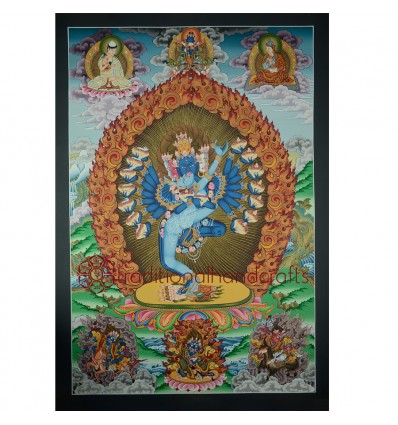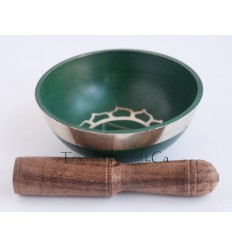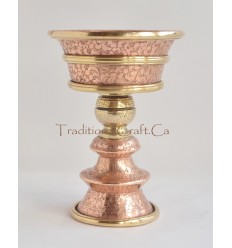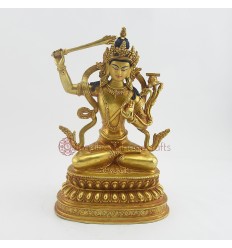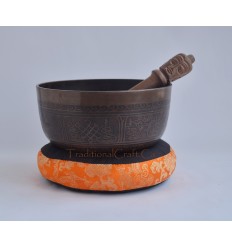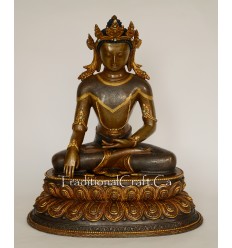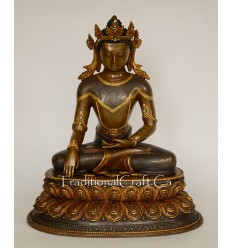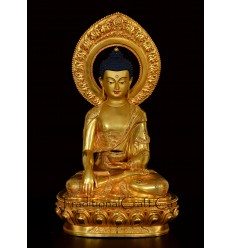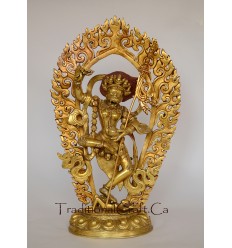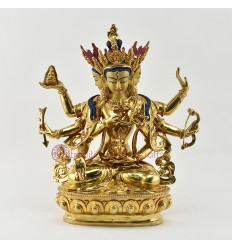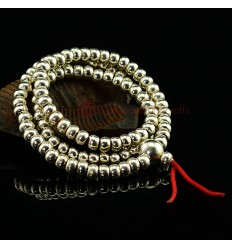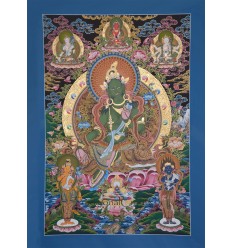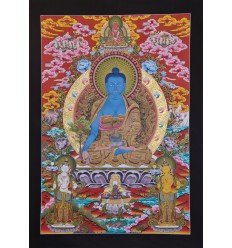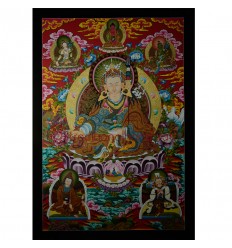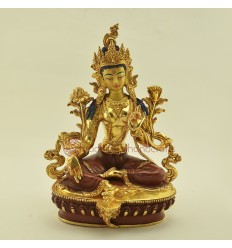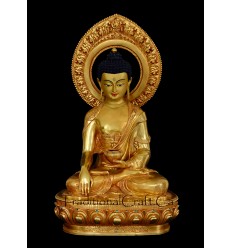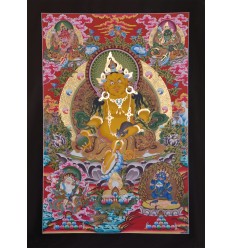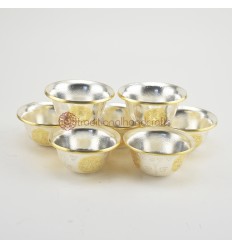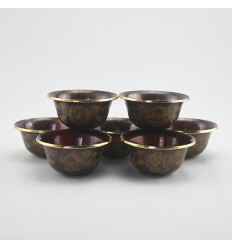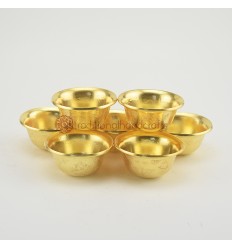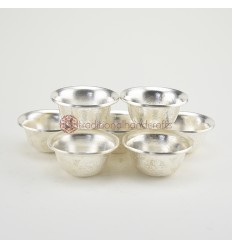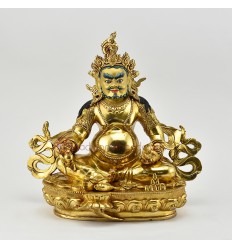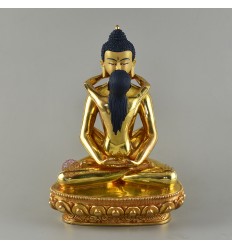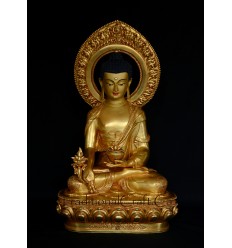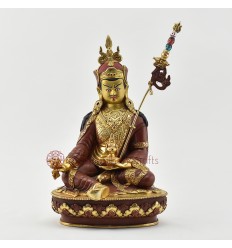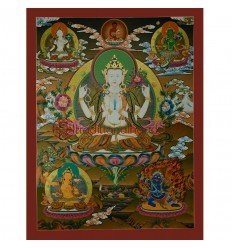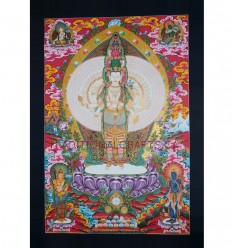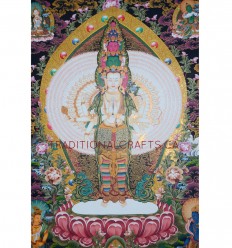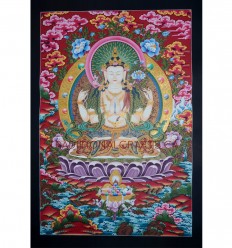No products
Product successfully added to your shopping cart
There are 0 items in your cart. There is 1 item in your cart.
31"x23" Hevajra Tibetan Buddhist Thangka Painting.
761768094853
New
31"x23" Hevajra Tibetan Buddhist Thangka Painting, Nepal.
1 Item
Warning: Last items in stock!
|
Name |
Hevajra Thangka |
|
Size with Border |
31" Long x 23" Wide |
|
Size without Border |
30" Long x 2" Wide |
|
Material |
Original Hand-Painted Cotton Canvas with 24 Karat Gold Detailing |
|
Style |
Tibetan |
|
Weight |
0.5 kg |
|
Ships From |
Bhaktapur, Nepal |
|
Shipping Provider |
Express |
|
Shipping Time |
Usually ships within 48 hours. Allow 3-5 business days for delivery worldwide. |
|
Insurance |
Insurance is included in the shipping cost. |
Hevajra
Hevajra can bee seen in dancing ecstatically in Alidha on four maras and closely embracing his consort Nairatmya. The expression of Hevajra is ecstatic and wrathful. Hevajra is an unexcelled yoga Tantra deity, perhaps closely related to the developments in the cult of Shiva Nataraja. Hevajra’s art is considered especially valuable in kindling the central nervous system inner fury fire that melts the inner drops from brain to groin and generates the subtle subjectivity of great bliss so essential in Tantric practices in the perfection stage. Nairatmya Hevajra’s consort is also a deity of subtle wisdom in her own right, a Tantric form a Prajnaparamita, Mother of all Buddhas.
Hevajra has sixteen – arms, eight faces and four legs. The eight faces indicate the purification of the eight releases. His four legs crush four maras, who symbolize the fourfold obstacle to enlightenment – the obstacle of the aggregated constituent elements of existence (Skandhamara), the obstacle of egoistic entanglements (Kleshmara), the obstacle of (Mrityumara), and the obstacle of rebirth in the form of gods (Devaputramara). According to a commentary of the Hevajra Tantra, four Hindu gods, Brahma, Yaksha, Yama and Indra, respectively personify the four Maras.
The sixteen arms of Hevajra signify the purification of the sixteen void nesses. In each of his hands he holds a skull cup. Each of the cups in his right hands contain, starting with his principal hand and moving to the lower, an elephant, horse, ass, man, camel, ox, lion and cat. That in the left holds Earth, Water, Air, Fire, Moon, Sun, Yama and Vaishravana. The elements in the skulls held in the left hands are usually visually represented in human form.
Carrying skull cup in all of the hands is one of the most distinctive features of Hevajra. The skull cup represents the mind aspect of the body, speech, and mind notion. It also represents death and impermanence, the illusory nature of all the phenomena. The animals and gods in Hevajra’s skull cup may symbolize a universal range of all matter and beings, alive, on earth, in the heavens. Thus, the sixteen skull cups collectively symbolize the sixteen void ness or Shunyata.
Nairatmya, the consort of Hevajra has two hands and two legs. Nairatmya is embracing Hevajra by her left hand, while the right hand holds a vajra – marked chopper. Her left leg is along with his, while her right leg is wrapped around his waist. Her expression is also wrathful. Both of them are adorned with bone ornaments and wear long garland of skulls. Nairatmya is wearing a skirt of tiger – skin.
No customer comments for the moment.


